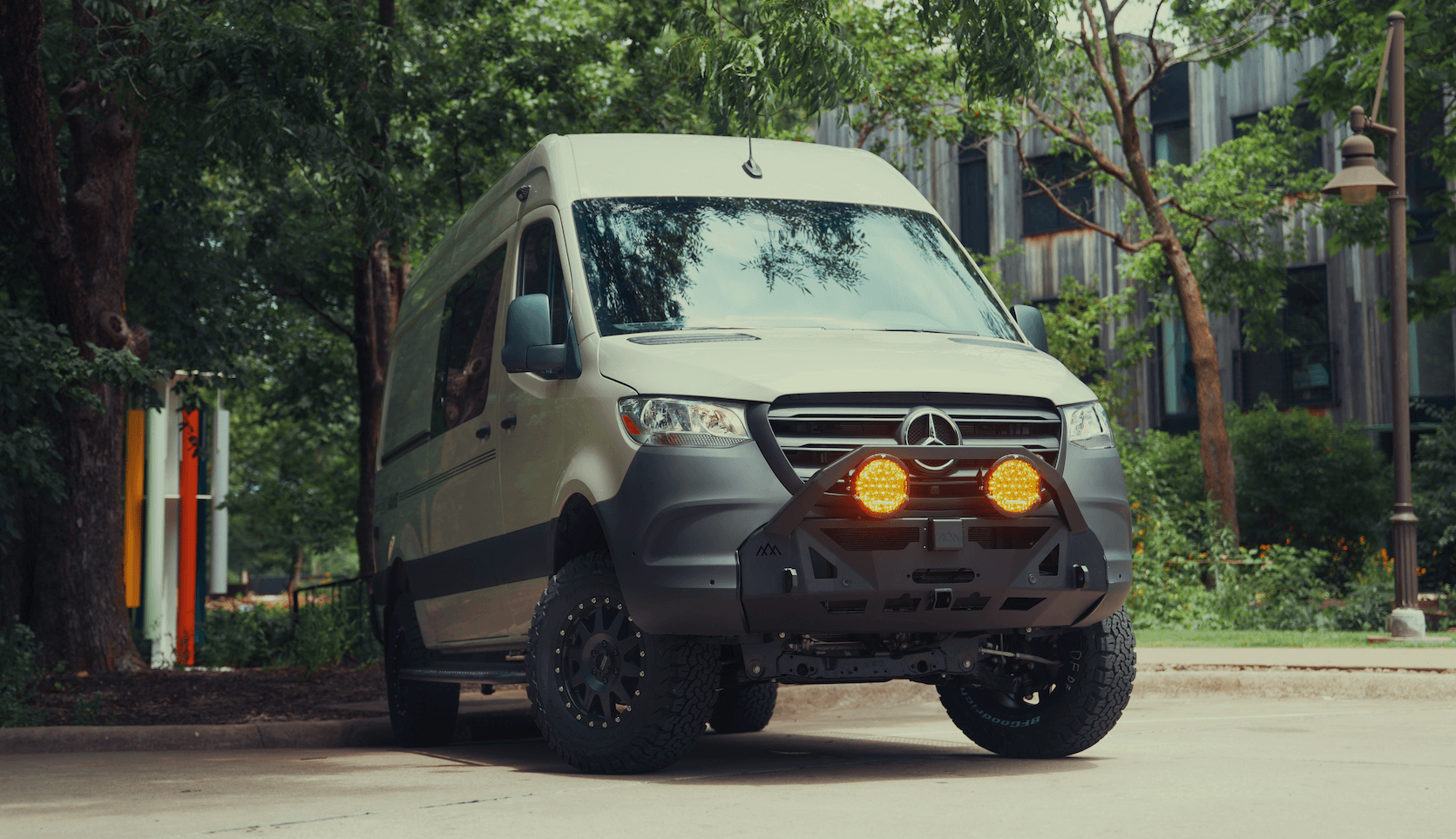Recreational Vans

The Sprinter 144 platform rewards careful planning. With a compact footprint and tight turning radius, it thrives on layouts that shift from lounge to sleep mode without drama. Think in zones. Driving cockpit that converts with swivel seats into a living room. Midship galley and storage wall for daily use. Rear bed that doubles as a cargo garage. Keep walkways clear so two people can pass without climbing over each other.
A flexible bed is the anchor. A raised platform over a gear garage protects bikes and totes while giving full length sleep. If you prefer open space, a convertible dinette creates a roomy salon for meals and work, then slides into a bed at night. Leave at least one continuous aisle to the rear doors so you can load long items and vent air easily.
Plan your weight distribution early. Galleys and water on one side and heavy power on the other can balance the van. Keep heavy items low and near the axle line to improve handling. Use paper tape on the floor to mock up clearances for the fridge door swing, slider path, and the cargo you actually carry.
Pair a queen platform with a tall garage for two mountain bikes and bins. Add a flip up bed panel so you can stand inside at the rear and wrench on gear.
Low bunks across the rear or along the wall can sleep kids while parents use a folding bed in the center. A curtain track gives privacy without stealing inches.
A swivel passenger seat with a slide out table creates a strong workstation. Run USB C power and dimmable scene lighting so the cabin shifts from tasks to rest quickly.
Storage is the difference between tidy and chaotic. Use vertical volume. Overhead lockers above the galley and bed carry soft goods but should be shallow enough to avoid head bumps. A full height cabinet near the slider can house pantry items up top with a pull out fridge or drawers below.
Under bed space is prime real estate. Build a garage tall enough for bikes with front wheels removed or boards up to your usual length. Add tie downs with L track or smart floor rails so loads do not wander. Drawer boxes that open at the rear doors make camp setup fast. A shallow bench by the slider hides shoes and doubles as a step for roof access.
Soft storage rounds it out. Mesh pockets on door panels catch daily items. Over cab shelf extensions hold bulky but light gear like jackets and bedding. Use clear bins sized to your cabinet depth so everything fits like a puzzle.
A short wheelbase benefits from a right sized power plan. Many travelers find a 200 to 400 amp hour lithium bank, a 2000 to 3000 watt inverter, and a mix of roof solar and high output alternator charging to be a sweet spot. That setup supports an efficient refrigerator, induction cooktop, lights, fans, and device charging. Add shore power for campsite days or storage charging.
Ventilation is essential. A roof fan placed near the bed and screened rear doors pull cool air through the aisle. For winter, a compact fuel fired heater keeps the cabin warm with low draw. Hot summer trips may call for a 12 volt air conditioner, which will influence battery size, alternator upgrades, and insulation choices.
Water can be simple and reliable. A 20 to 30 gallon fresh tank under the bed or inside a cabinet near the axle reduces slosh and helps winter travel. A gray tank under the floor with a protected valve keeps the interior clean. Quick connect showers at the rear doors make dirty jobs easy, while a small indoor wet bath only makes sense if you will use it daily.
Lighting and controls tie the system together. Use zoned, dimmable LEDs so you can set a quiet evening scene. Place switches at the slider, bed, and rear doors. Label everything clearly so guests can help without guessing. A compact monitoring panel or app view shows battery state, tank levels, and temperature at a glance.
Practical finishing touches elevate daily life. Acoustic insulation and quality wall panels cut road noise and support good sleep. Durable flooring with a subtle grip handles mud and sand. A simple boot tray by the slider and a mat at the rear doors keep grit out of bed. Finally, remember roof real estate is finite. Solar, a fan, a possible skylight, and a roof rack must share space, so sketch the roof early and pick components that match your travel style.
You can take these Sprinter 144 build ideas in many directions. If you want a custom plan and precise execution, our team designs and builds complete adventure vans with balanced layouts, dialed storage, and dependable power. Explore our core services and see how we approach fit and finish across platforms.
At OZK Customs in Fayetteville Arkansas, we listen first and build second. Bring your route map, your gear list, and your must have comforts. We will translate those priorities into a floor plan, storage system, and power package that makes the most of a short wheelbase rig. When you are ready, reach out and we will outline design, timeline, and next steps to get you on the road.
Ready to turn your Sprinter 144 build ideas into a dialed, road ready rig? Tell us how you travel, and our team will design, fabricate, and upfit a van that fits your routes, your gear, and your daily rhythms. Submit the form to start your custom plan and get a clear timeline and investment outline.
ADDRESS:
6159 E Huntsville Rd, Fayetteville, AR 72701
PHONE:
(479) 326-9200
EMAIL:
info@ozkvans.com